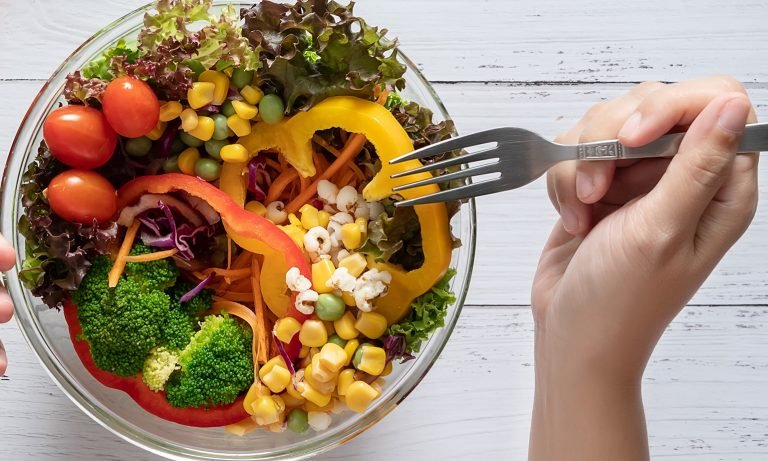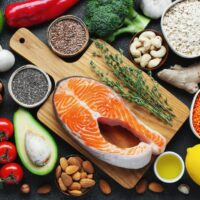Tips for Healthy Food Eating

Introduction
Eating healthy doesn’t have to be a chore. There are simple steps you can take that will help you eat better and feel good about what’s on your plate. And as it turns out, most people don’t need to diet or count calories to live healthier lives—they just need to make some small changes in their eating habits. So whether you want to lose weight or maintain a healthy weight, here are some simple tips for making your mealtime meals more nutritious:
Choose a variety of foods.
To ensure you’re getting the right amount of vitamins and minerals, it’s important to include a variety of foods from all five food groups. Make sure you eat enough from each group so that you get the nutrients your body needs.
- Eat a variety of fruits and vegetables each day. They are low in calories but high in vitamins, minerals and fiber.
- Choose whole grains instead of foods made with refined flour or enriched flour. Whole-grain products have more vitamins, fiber and minerals than their processed counterparts do; they also contain less sugar and sodium than processed foods do because they contain the entire grain kernel (the bran, endosperm and germ).
- Select lean meats, poultry without skin; fish; seafood (think salmon); beans; peas; nuts/seeds/legumes — all excellent sources of protein that can help fill you up without adding excess calories to your diet so long as portion sizes are reasonable — tofu for instance has about 120 calories per half cup serving which is about 3 ounces — not much at all!
Keep it balanced.
To maintain a healthy diet, it’s important to keep your meals balanced. A balanced meal is one where all of the food groups are represented and eaten in appropriate quantities.
For example, a serving of meat or fish usually has about 25g protein, but fewer than 10g fat and carbs. By contrast, nuts, seeds and other plant foods typically have less protein but more fat and carbs (and often fibre).
You don’t need to eat exactly half a plate of each food group at every meal – just spread your meals throughout the day so that you’re eating a regular mix of foods from all four groups:
Guide portions.
Guide portions.
A portion size is a measurement of food that’s about the size of your fist, or a deck of cards. A good way to think about this is by using your own hand as a guide and filling up your plate with foods that add up to be more or less the same size as each individual part of your hand. Try not to overfill one area on the plate so it looks full, while leaving other areas empty or almost empty.
Portion sizes can vary widely depending on what type of dish you’re making (for example: large meatloaf versus small cupcakes) and whether it’s cooked or raw (for example: 1/2 cup cooked pasta versus 4 ounces uncooked). You should always measure out servings using measuring cups and spoons before putting them into your pan/bowl/plate in order to have an accurate idea of how much food you’re eating at once.
Make half your plate veggies and fruit.
Half of your plate should be comprised of vegetables and fruit.
Vegetables and fruit are high in fiber, vitamins, and minerals. It is recommended that you consume at least 5 servings of vegetables or fruit per day. Fruits can be used as desserts or snacks while vegetables are best suited for side dishes.
Focus on whole fruits.
Fresh fruit is a much healthier option for your body than fruit juice. Whole fruits contain fiber and a variety of vitamins and minerals that help you feel full and satisfied, as well as antioxidants that can protect the body from disease. In contrast, juices tend to be higher in sugar (which leads to weight gain and insulin resistance) and calories than whole fruits because they don’t have the fiber of their pulp.
Another reason why it’s better to choose whole fruits over juices is because they are less expensive; depending on the brand and type of juice you buy, they could cost over $1 per ounce while whole fruits cost pennies on average.
Vary your protein options.
Protein is an important part of a healthy diet. It helps build, repair and maintain muscles, bones and other tissues in the body. Protein also helps make hormones, enzymes and antibodies that fight infections.
Protein can be found in many foods including eggs, fish and meat products such as beef. Plant-based sources of protein include legumes (beans), grains (wheat), nuts and seeds.
Make half your grains whole grains.
Studies have shown that whole grains help to promote weight loss, reduce the risk of heart disease and type 2 diabetes, and lower cholesterol levels. Whole grains are also rich in fiber and several vitamins and minerals.
Whole grains include oatmeal, brown rice, quinoa, whole wheat pasta and breads (unlike refined grains which have been processed so they contain less fiber). These foods take longer for your body to digest than refined grains such as white bread or white rice.
Know the limits on fats, salt, and sugars.
- Limit saturated fats (found in foods like fatty cuts of meat, butter, and cheese) to less than 10% of calories per day.
- Limit trans fats (found in foods such as baked goods and fried foods) to less than 1% of calories per day.
- Limit added sugars (sweeteners used while cooking or preparing food) to less than 10% of calories per day.
- Limit sodium (salt) to less than 2,300 mg per day.
Drink and eat your calories wisely.
When you’re drinking, water is always the best choice. It’s free and helps keep your body hydrated. Plus, it doesn’t have any calories or sugar. When you do want a drink that has some flavor, limit yourself to one glass per day and make it unsweetened tea or coffee (or diet soda if that’s more your speed).
Don’t drink sugary drinks like juice, soda or sweetened beverages on a regular basis. These aren’t just empty calories—they also cause weight gain by increasing hunger and leading to overeating later in the day.
Sugar-sweetened beverages are considered a major source of added sugar in Americans’ diets—accounting for nearly one-fourth of all added sugars consumed in 2015—and contribute large amounts of calories without providing any nutrients other than energy from carbohydrate (about half as much as an equivalent amount of orange juice). Sugary drinks are associated with weight gain; this risk is particularly high among children who consume them regularly.
To have healthy eating habits, you have to plan ahead.
Planning is key to healthy eating. Planning helps you make good choices and avoid temptation, which in turn helps you save money and reduce unnecessary calories. Healthy food options are also more likely to be available at restaurants if they’re on your mind when you dine out.
Conclusion
I hope these tips have helped you understand the basics of healthy food eating. Remember that it’s important to plan ahead, so you don’t end up eating unhealthy options because you didn’t think about what you were going to eat beforehand!



